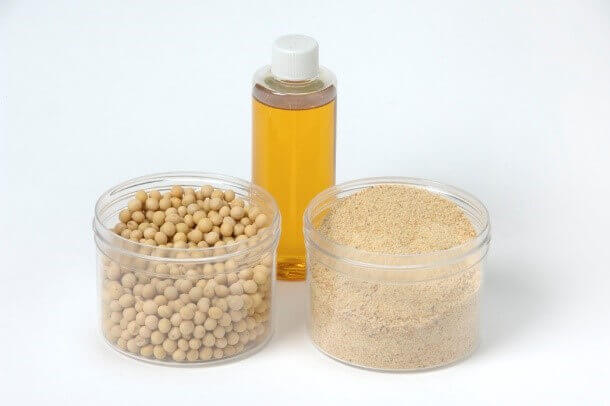Les avantages des régimes alimentaires à plus forte teneur en graisses : 5e partie, Recommandations

Ceci est le cinquième et dernier volet de la série d’articles de blogs portant sur les raisons pour lesquelles les régimes alimentaires à plus forte teneur en graisses sont bénéfiques et devraient être utilisés pour nourrir vos animaux. Voici un rappel des articles précédents :
- La 1re partie donne une définition des régimes à plus forte teneur en graisses pour différentes espèces, et indique que cette série d’articles portera exclusivement sur l’accroissement des teneurs en graisses et en huile (des termes souvent utilisés de façon interchangeable) dans une formulation, dans les limites de ce qui est considéré comme normal.
- La 2e partie porte sur les effets positifs des régimes riches en graisses sur la consommation et les performances chez les volailles, les porcs et les vaches laitières.
- La 3e partie expose les raisons fondamentales pour lesquelles les régimes à plus forte teneur en graisses sont bénéfiques. Les animaux dont les régimes sont plus riches en graisse sont physiquement différents des autres, et ils absorbent mieux les nutriments.
- La 4e partie détaille les apports des sources de graisse de haute qualité, à savoir la vitamine E et la lécithine, et précise l’importance de ces apports.
Alors, à présent, que faire de ces informations ?
Les parties 1 à 4 soulignaient les nombreux avantages des régimes à plus forte teneur en graisses, alors quel est le meilleur moyen d’atteindre cet objectif de formulation ?
L’ajout de sources isolées de graisses et d’huiles, telles que les huiles végétales, les graisses animales et les mélanges (mélanges AV, DDS avec mélanges de graisses animales, entre autres) est toujours coûteux par rapport aux autres ingrédients. Ici, dans le centre de l’Iowa, le maïs coûte environ 0,05 dollar/lbs ; le tourteau de soja standard résultant d’une extraction à l’hexane (entièrement déshuilé) peut coûter 0,18 $/lbs ; et la graisse blanche de qualité s’échange à environ 0,30 $/lbs. Ainsi, achetées seules, les graisses et les huiles sont chères.
Deuxièmement, il faut toujours prendre en compte la qualité. Comme nous l’avons déjà montré sur le blog Insta-Pro, il existe d’énormes différences de qualité entre les divers types de graisses et d’huiles, et même au sein d’une même catégorie d’ingrédients (par exemple « l’huile de soja »). Ne partez pas du principe que toutes les sources de graisse se valent, car c’est loin d’être vrai.
Alors, quelles sont mes recommandations pour profiter des avantages d’un régime enrichi en graisses ? Utilisez des tourteaux contenant des huiles résiduelles de haute qualité. Depuis des décennies, nous démontrons que les tourteaux de soja ExPress® extrudés à sec non déshuilés et extrudés à sec avec cisaillement élevé/partiellement déshuilés sont des tourteaux de qualité supérieure, contenant de l’huile résiduelle. Et pourtant, ces ingrédients sont classés parmi les tourteaux – pas les huiles – et seront donc comparés à d’autres tourteaux de graines oléagineuses et d’ingrédients similaires.
Il en résulte que les régimes à plus forte teneur en graisses peuvent être formulés avec ces tourteaux, et qu’il est possible d’obtenir leurs huiles résiduelles à des prix plus proches de ceux du tourteau, c’est-à-dire souvent moins cher que si ces huiles étaient séparées du tourteau. Du point de vue des performances et des coûts, il est toujours plus intéressant de supprimer les graisses et les huiles isolées et de les remplacer par des tourteaux contenant une huile résiduelle de haute qualité.
C’est vraiment là l’objectif ultime : augmenter les niveaux de graisse dans l’alimentation de vos animaux, profiter des avantages d’une alimentation plus riche en graisses et le faire à moindre coût. Laissez Insta-Pro vous aider à ce sujet.


